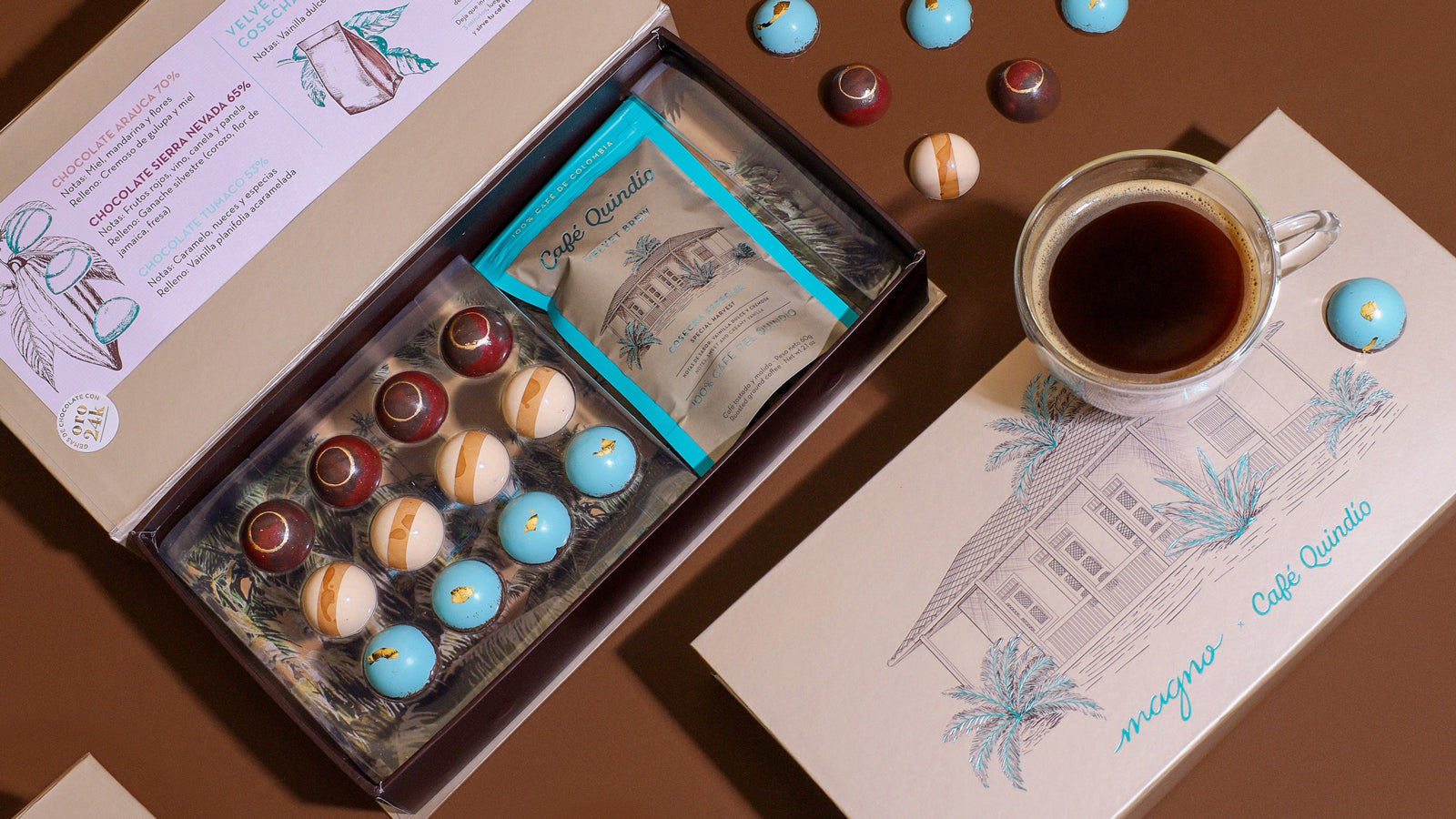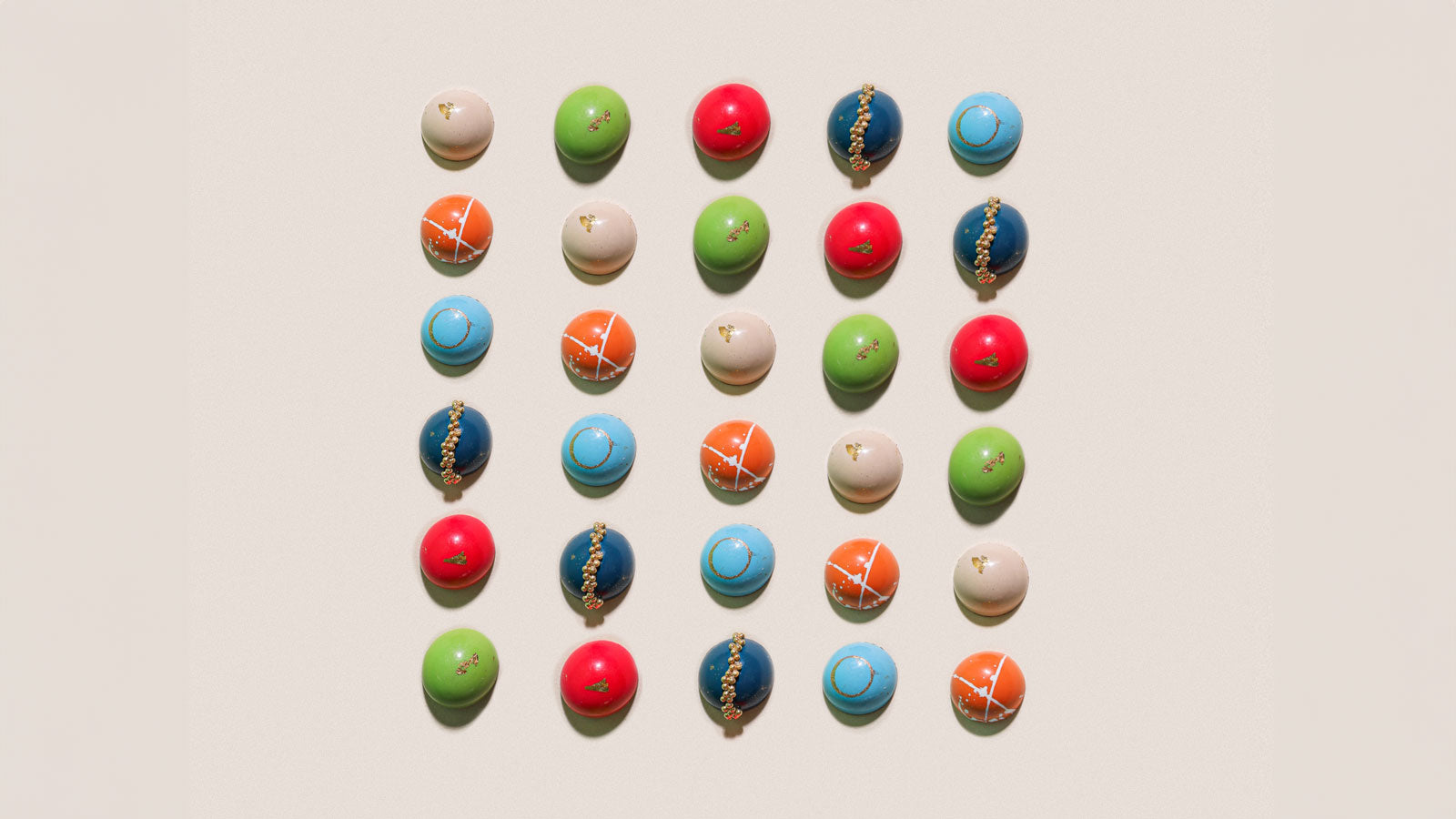Think of fine flavor cacao (or its alternate spelling "fine flavor cocoa" ) like a bottle of fine wine. It smells amazing, tastes great, and has everyone smiling as soon as you open it up. It's complex, has interesting flavors, and is something you can really savor. Now let’s think of its counterpart: bulk cacao. This would be your 2 buck chuck. Sure it’s still wine, but the finer bottle is going to feel much more special when sharing it with friends and family. It will also leave you feeling less guilt in terms of how it's made.

So as you can see fine flavor cacao is essentially one of two broad categories of cocoa beans. This term is used by the International Cocoa Organization (ICCO) to highlight exceptional cocoa. It represents a relatively small share of the total world cocoa bean exports accounting for roughly 8-12% of the total world production. This distinction means you can expect higher quality and superior taste compared to ordinary or bulk cocoa beans. In addition to their complex flavor profile, they also have an impressive aroma. These are not added flavors or smells, but inherent qualities that shine through naturally in the beans themselves. This is why they are highly prized within the chocolate industry.
Key Characteristics:
Defining the Exceptional: Complex Sensory Profile
One of the defining qualities of Fine flavor cacao is that it has to have a complex sensory profile. What that basically means is that it’s as much of a treat for your nose as it is your palate. The flavor is a blend of harmonious basic taste characteristics balanced by a distinct aroma and flavors. This can come through as fruity, nutty or spicy notes. All of these subtle characteristics shine through in the chocolate it’s made into. This intricate dance of flavors is a result of several factors.

A Criollo cacao pod split open to show its wonderful fruit inside. The beans are actually seeds that are inside the fruit which are seen below the pod.
Factors Shaping Flavor: Genetics, Environment, Management and Processing
The exact scientific recipe behind what contributes to fine flavor cacao is still ongoing. That said, the consensus is that it’s a result of an interplay between one or more of the following factors:
-
Genetics:
The unique genetic makeup of the beans and their lineage. -
Favorable Growing Conditions (Terroir):
The specific environment including soil, climate, and altitude, significantly contributes to the flavor profile. -
Specific Plantation Management Techniques:
Meticulous care throughout the growing process, from planting to harvesting, enhances the beans' potential. -
Fermentation & Drying:
The post-harvest journey, from careful fermentation and drying plays a vital role in unlocking the complex flavor potential within the beans. Fine flavor cocoa processing emphasizes gentle techniques that preserve the delicate and unique flavor profile.
Fine Flavor vs Bulk Cocoa:
As we’ve covered, there's a world of difference between fine flavor and bulk cocoa. While fine flavor cacao boasts a complex symphony of taste, bulk cacao has more of a basic flavor. It‘s more of a generic chocolate taste that lacks any subtleties of its counterpart. In its raw form minor flaws in the beans can linger on the palate. This is often masked by adding excessive amounts of sugars or artificial flavors.
Varieties and Production:

Just one of the many beautiful Criollo Cacao trees that contribute to the chocolates at Magno.
While there are many varieties, hybrids, and populations of cacao trees, there are three that are well known in the cocoa industry. This is because they are they most common and most closely associated with the production of both fine flavor and bulk cacao.
-
Forastero Trees:
These hardy, more pest-resistant trees yield the majority (up to 90%) of the world's cocoa and are heavily associated with bulk cocoa production. Originating from the Brazilian Amazon, these trees can now be found across the globe since they can handle larger scale agricultural production. -
Criollo Trees:
These are the most challenging to cultivate due to lower yields and pest susceptibility. However, their beans are more commonly associated with fine flavor cacao and the trees themselves are highly prized. They are believed to have originated in the Sierra Nevadas of Colombia and although exceedingly rare the majority can be found in Colombia, the surrounding countries. -
Trinitario Trees:
These Criollo hybrids are known for being hardier than their Criollo counterparts, while still producing phenomenal cacao. These trees emerged in the island of Trinidad, where the decimated population of Criollo cross pollinated with the hardier Forestero that were brought in to replenish them. Over hundreds of years they've taken on their own form and can now be found throughout the Caribbean, Venezuela, Nicaragua, Madagascar, Cameroon, and Indonesia.
Both Criollo and Criollo hybrids like Trinitario are more likely to produce fine flavor cacao. That said and even though they are often attributed to its production it is not necessarily a requirement. Under the right conditions a Forestero tree is still capable of producing fine flavor cacao.

Beyond Genetics: Plantation Management for Quality
As we mentioned, Fine flavor cacao production goes beyond the type of tree. Meticulous plantation management techniques can further enhance the quality of the beans. This includes practices like:
-
Proper pruning and disease control
-
Nutrient-rich soil management
-
Providing shade for the trees
-
Proper harvesting practices
Harvesting and Flavor Development:
Selecting the Best: Harvesting for Optimal Flavor
Fine flavor cacao prioritizes quality over quantity. Harvesting typically involves handpicking only ripe cocoa pods to avoid off-flavors that can arise from unripe or overripe beans.

Cacao is split, photographed, and scanned with AI to measure its quality!
AI-powered Selection:
Our partners utilize cutting-edge artificial intelligence (AI) tools to assist in analysis, identifying the ripest and most flavorful beans. These quality control AI systems are trained on vast datasets of high-quality cacao. This lets them rapidly analyze characteristics like size, color, and even subtle surface imperfections. This technology empowers our partners to control the quality of cocoa beans with remarkable efficiency, ensuring only the most exceptional cacao makes its way into our chocolates. Woohoo!

Moisture reading during the fermentation process
Fermentation and Drying: Unveiling the Bean's Potential
This is a huge one. The fermentation and drying processes is a crucial step that significantly impact flavor development. Careful monitoring and precise techniques ensure the beans retain their delicate flavors during these crucial stages. Factors influencing flavor include:
- Length and temperature of fermentation
- Climate and fermenting environment
- Duration and method of drying
Composition and Bean Integrity:
Acidity and Delicate Flavors: The Essence of Fine Flavor
Fine flavor cacao beans have a lower acidity level, allowing the natural flavors to shine through without any harsh or bitter notes. This allows the complex flavor profile, with notes of fruit, floral, caramel, and even spices, to come to the forefront.

Properly fermented beans are visibly different and boast a fruity/vinegar-like smell.
Maintaining Bean Integrity Throughout Processing
To achieve the desired characteristics, fine flavor cocoa beans require careful handling throughout the entire production process. This includes proper storage and transportation to maintain the integrity of the beans and preserve their unique flavors. The beans are often stored in controlled environments to prevent any moisture or heat damage that could compromise their quality.
Location and Terroir:
Beyond Borders: The Geography of Fine Flavor
While location isn't the sole predictor of fine flavor cacao, production is currently concentrated in specific countries particularly in Latin America and the Caribbean. Colombia, Venezuela, and Ecuador are some of the most prolific producers, accounting for the majority of fine flavor cacao production. That said, fine flavor knows no borders. Under the right conditions and care it can emerge in any tropical country or region of the world.
Ethical Harvesting

Mama Magno on a field visit with the Chocolate Dream foundation
Since the trees that most commonly bear fine flavor cacao are often more challenging to grow, large scale agricultural operations are hard to execute. These trees favor growing conditions of mixed vegetation— particularly in the shade of other trees. This means the chances of encountering many of the nightmares of industrial farming and the resulting unethical labor practices are heavily reduced.
For instance, in the case of the cacao that is turned into Magno Chocolates, child labor on the farms we source from in Colombia is not an issue like it is in other parts of the world. Our cacao comes from small farmers who are fairly compensated for the quality of their harvest. Additionally, through the Chocolate Dream Foundation, Magno is directly involved in efforts to help improve the quality of the farmers well being as much as the quality of their amazing harvest.

Magno is proudly involved with the Chocolate Dream foundation
Classification and Controversy:
Defining Excellence: The Quest for Universal Standards
The classification of fine flavor cacao was for a long time a topic of debate due to the lack of universally agreed-upon criteria. A significant step towards addressing this issue was the introduction of a new definition proposed by the ICCO in their 2010 International Cocoa Agreement. Here is that definition:
Fine flavour cocoa is cocoa characterized by a complex sensory profile, composed of well-balanced basic attributes with aromatic and flavour notes; the complementary attributes can be clearly perceived and identified in the expression of its aromas and flavours; it results from the interaction between (a) a particular genetic composition, (b) favourable growing conditions in a given environment/terroir, (c) specific plantation management techniques, (d) specific harvesting and post-harvest practices and (e) stable chemical and physical composition, and integrity of the bean;
This proposed classification aims to provide a more objective and universally-accepted criteria for determining whether cocoa of a given origin qualifies as fine aroma cacao.
Fine Flavor vs Fine Aroma: A Matter of Translation
"Fine aroma" and "fine flavor" essentially refer to the same concept. "Cacao Fino de Aroma" is the Spanish term for fine flavor cacao, and "fine flavour cocoa" is the direct translation used in the ICCO's official English agreement.
The Cocoa vs Cacao the confusion
While "cocoa" is most commonly associated with cocoa powder, the base ingredient for many chocolates or food, both terms actually refer to the same plant - Theobroma cacao. "Cacao" is the more botanically accurate term, derived from the plant's scientific name. "Cocoa" is the anglicized version and can encompass various products derived from the cocoa plant, including the processed powder, butter, cocoa liquor, and even chocolate itself. So in reality it all comes down to preference and context.
Fine Flavor Cacao at Magno Chocolates:
Our Commitment: Single-Origin Fine Flavor from Colombia
At Magno Chocolates, we believe in using only the finest ingredients. That's why all of our chocolate is crafted with single-origin fine flavor cacao sourced from Colombia. We source our beans from regions renowned for producing some of the world's best cocoa beans.
Beyond Taste: Ethical Practices and Community Support
Our commitment to quality extends beyond the bean itself. We believe in ethical and sustainable practices throughout the entire chocolate-making process. By using fine flavor cacao, we support small cocoa farmers and local communities.
Conclusion:
A World of Flavor: The Allure of Fine Flavor Cacao
Fine flavor cacao offers a sensory experience unlike any other. Its complex flavors and aromas, influenced by genetics, environment, and meticulous processing, make it a highly sought-after ingredient for chocolate connoisseurs. From the fruity notes of Criollo cocoa to the rich chocolate base of Trinitario beans, fine flavor cacao continues to captivate taste buds and inspire chocolate makers around the world.
Intrigued by the world of fine flavor cacao?
Explore our selection of single-origin chocolates crafted with these exceptional beans!


